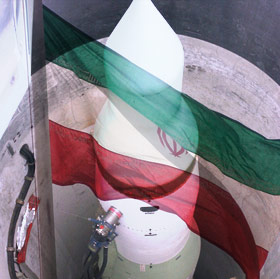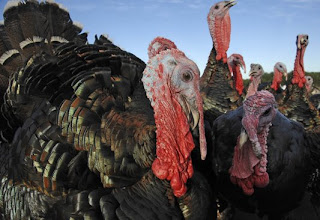
By
Daniel Salem Padovano - Global AffairsVisit the front pages of Wall Street Greek and Market Moving News to see our current coverage of economic reports and financial markets.In a not too distant future, incidents happen and unfold...Iran warns that enough is enough and that it will not be threatened or ignored any further. Iran's leadership feels the time has come and launches "Operation Cyrus the Great". As a prelude, Iran has Hezbollah attack Israel. Ships are seized by pirates (possibly in the pay of Iran) in the Gulf of Aden and off the Somali coast. Israel and the west are distracted.
At night, three submarines sail through the Persian Gulf and into the Gulf of Oman. Back in
the Gulf, Iran begins mine laying operations. American and Saudi AWACS aircraft pick up several blips moving south from Iran; they are passed over as ground clutter, as the "blips" are very close to ground level. Minutes later, radar picks up several jet fighters closing in from below. Iranian fighters destroy one AWACS; the second manages to transmit the attack before it too is destroyed.
As operations commence, Iranian aircraft make several coordinated raids against American bases in Iraq, Saudi Arabia and Bahrain. CentCom in Bahrain is destroyed, as is the command center in Baghdad. Oil facilities at Jubail and Dammam are attacked as well. The ensuing confusion delays a proper assessment and reaction.
The Gulf is mined and shipping halts. Ships close to the Iranian coast are seized offering Iran new hostages, signaling that even "neutral" flag vessels may be considered as hostile.
Amphibious landing craft arrive at the tip of the Musandam Peninsula. On board are Iranian military who soon gain control of the communications facilities guiding ships through the Strait of Hormuz.
Iran's Shahab 3 missiles, with ranges of 1,500 kilometers are erected and put on alert. Iran announces that action was taken to "…preserve Iran's national sovereignty and to bring order to the Gulf region. Military response will be met with the full force of Iranian power."
When American and other national forces are able to assess what has happened, war has already unfolded. In the White House, the President awakens to a new reality.
The above scenario is only one of many possible futures, but what if…?Much attention has been given to the prospects of a preemptive military action or possible war against Iran. The potential cause of this conflict is Iran's continuing pursuit of producing its own nuclear energy resources, and quite possibly producing weapons grade nuclear material that can be used to produce nuclear weapons. Adding to this tension is Iran's ongoing development of ballistic missile technology.
While the current financial crisis and recent U.S. Presidential elections have diverted the world's attention from the Iranian crisis, it is one that will most likely return to the world's headlines by mid-winter, and could easily present President-Elect Obama with his first international and military crisis.
Given the tension between Iran and the West (most notably the United States) which continues to raise tensions in the Persian Gulf region, how likely is a war between Iran and the United States? If there is a war, what might it look like; how would it be fought; and what might be the possible outcomes? These are the topics discussed below.
The Persian Gulf, a PerspectiveWhat makes the Persian Gulf so important?To keep the Persian Gulf, or "the Gulf" in perspective (as far as energy and geopolitics are concerned), one need only to look at a map of southwestern Asia. The Gulf is at the bottom of what is referred to as the "Strategic Energy Ellipse". This ellipse encompasses 15 countries across the region from Samarra, Russia at the northern locus, the Iranian-Pakistani border on the east, the coasts of Oman and Yemen on the south and to the west, the Iraqi-Syrian border.
The Strategic Energy Ellipse rests atop 70% of the world's proven oil reserves and 40% of its natural gas deposits; the lion's share rests in the Persian Gulf. It is also a region that has had its share of armed conflict (both interstate and intrastate) since 1980.
The Gulf, covering an estimated 251,000 square kilometers, contains an estimated 715 billion barrels of oil and 2.5 trillion cubic feet (69.7 trillion cubic meters) of natural gas reserves. It stretches 989 kilometers from the Shatt al-Arab to the Strait of Hormuz, and varies in width between 370 kilometers to 34 kilometers at the Strait. On a daily basis, about 15 million barrels of oil transit the Gulf (nearly 40% of the world's total hydrocarbon fuel resources).
The Gulf is not very deep, with an average depth of 50 meters and maximum depth of 90 meters (mostly on the northern side extending south from Bandar al-Bushehr to the Strait itself). The Gulf's basin slopes gently in the northern half, but becomes sharp in the center and western portions. Even from space this is evident as the waters are lighter in the western and southern regions.
The Strait of HormuzThe Strait of Hormuz at the eastern end of the Gulf has a unique geography. A finger shaped piece of land, the Musandam Peninsula jutting north from the United Arab Emirate of Ras-al-Khamia and Oman almost separates the Persian Gulf from the Gulf of Oman. Across the Gulf is the Iranian coast, which includes Iran's largest port and naval headquarters, Bandar Abbas,
Both shore areas are extremely shallow with reefs and strong eddies. Smaller vessels have little problem, but the supertankers cannot navigate where they choose. Most of today's supertankers exceed 300 meters in length, exceeding the lengths of most cruise ships and in some instances, aircraft carriers. Ships of this size often require almost a kilometer to make a turn.
To facilitate transit, a traffic separation scheme is used. A ship "highway" 10 kilometers wide allows ample room for ships to transit the Strait. This highway includes three shipping lanes, each of which is 3 kilometers wide: one for outgoing traffic, one central meridian and one for incoming traffic.
The Gulf's littoral states include: Iraq (Basra), Iran, Oman, The United Arab Emirates, Saudi Arabia and Kuwait.
Oil fields pretty much line the northern shorelines, and eastern Saudi Arabia. The region's largest refineries are located in Iran: Kharg Island and Abadan; and in Saudi Arabia, Al-Dammam. Al-Dammam is connected to the Red Sea refineries of Yanbou by trans-Arabian pipelines. Large gas deposits are also located in these areas, largely throughout eastern Saudi Arabia, and including Bahrain and Qatar.
Iran's Geography
Iran is both a vast country (1.6 million square kilometers) and a natural fortress connecting the Middle East to both Central Asia and India. The Zagros and Elbruz Mountain ranges define Iran's western and northern frontiers. At its southern terminus, the Zagros gives way to the flatlands and marshlands of southern Iraq (Basra province) and southwestern Iran (Khuzhestan Province).
The southern frontier is defined by the Persian Gulf, the Gulf of Oman and part of the Arabian Sea. Iran's eastern frontier is desert; the northern half is the Dasht-e-Kavir and the southern half being the Lut-e-Kavir. Both deserts are among the harshest deserts on the planet.
Iran's population of approximately 70 million people is young; some 50% of whom are 25 years old and younger and have only known "revolutionary" Iran. Most of this generation is highly educated and skilled. A majority of Iran's population and industry is located in the mountainous arch formed by the Zagros and Elbruz mountains. The interior deserts and eastern mountains remain sparsely populated and little developed.
Iran and a Sense of PurposeIran, formerly known as Persia, has a long and documented history going back almost 5,000 years. Home of various empires, among them: the Achaemenid, Seleucid, Parthian, Sassanian, Safavid and Qajarite. Iran, especially under the current regime, is very much aware of its earlier history as a world power, most notably during the Achaemenid (c.550-460 B.C.) and Parthian (c.250 B.C. – 224 A.D.) dynasties.
Even under the best of circumstances, invaders have had a tough time cracking Iran. The Mongols were the last successful invaders, having gained entry through Turkmenistan and northern Afghanistan. Overall, Iran has a history of absorbing invaders, not succumbing to them.
With the victory of the Islamic Revolution in 1979, Iran's national character was reborn in essence. The previous three and a half centuries of static existence under the later Safavids and Qajars, and the western dominated Pahlavi dynasty, were erased. The ascendancy of the Ayatollah Khomeini's revolution was seen as a restoration of Iran's sovereignty and character. That is, a Shiíte Islamic one, but one that is also very Persian in ancestry and character.
Post Revolutionary Iranian leadership sees Iran returning to its historical roots as a power not only in the Gulf region, but in world affairs. This is not a new development, but one that is based on historical records, population size and age, religion and oil wealth; and it is a logical path for Iran to ascend to a role of world power status again.
President Mahmoud Saborjihan Ahmadinejad
Some pundits have called Iran's president "crazy", or worse. These descriptions are largely due to his repeated calls for the destruction of Israel and anti-homosexual statements. Born on October 28, 1956 south of Tehran,
Ahmadinejad is a conservative Shi'a follower, Iranian nationalist and holds a Ph.D. in engineering. He served with the Basiji of the Pasdaran (Islamic Revolutionary Guard Corps) during the Iran-Iraq war. His post war political posts include being an adviser to the governor-general of Kurdistan and serving as governor of both West Azerbaijan and Ardabil provinces. In 2003, he became Mayor of Tehran, and President in 2006.
Ahmadinejad entered the Iran University of Science and Technology in 1976. In the years that followed, he was involved with the Office of Unity and Strength. This group opposed and dissuaded people from supporting the Marxist Mohajedin e-Khalq. It was at this time that he has been accused of planning the 1979 seizure of the American embassy. (Iran's government has repeatedly denied these accusations).
His service with the Basiji during and after the Iran-Iraq War includes allegations that he was involved with operations against Iranian dissidents outside of Iran. He may be a follower of the "Twelver" branch of Shi'a Islam which awaits the return of the Twelfth Imam who was hidden in 874 A.D. According to Twelver belief, the 12th Imam is the Mahdi, a savior who upon his return will usher in an age of peace and justice.
If this is true, then it may be that Iran's President may see Iran as the door opening this Mahdist age... a door that can be opened if Iran is not only seen as a door, but becomes
the door. As a nationalist, President Ahmadinejad maintains that Iran reserves the right to develop its own energy sources, nuclear power being the chief one cited. Should Iran elect to pursue development of nuclear weapons fuel from used civilian reactors, it could indeed become a regional power, and a world power should its missile development mature.
Prospects for Conflict in the Gulf"If there is ever another war in Europe, it will come out of some damned silly thing in the Balkans."
German Prime Minister Otto von BismarckIt is quite possible that a similar sentiment could ring true for the next Persian Gulf conflict; a big war that will most likely arise from a series of events that quickly spin out of control.
Given the tensions between the west (primarily the U.S.) and Iran, it is not beyond imagining that a small incident could escalate into a bigger incident or war. Some of these possibilities could include:
- A maritime incident involving either civilian or military vessels.
- A missile test gone wrong with one landing in someone else's backyard.
- A situation involving Iran and Israel. This might also include Iran sponsored Hezbollah attacking Israel provoking an Israeli response.
- A situation involving Iran and Iraq, whereby the U.S. is drawn in.
- Outright action by Iran against neighboring Gulf state' oil production.
- Provocative moves that lead Israel, the West or the U.S. to believe Iran has a working nuclear weapon capability or delivery system.
Iranian Military Capability and StrategyIran's main concerns in any conflict, principally with the United States are: 1) tighten or close down oil transport out of the Gulf, 2) spread unease among the adversary(ies), most likely through terror attacks outside of the Gulf region, and 3) resort to use of unconventional weapons if needed. Iran is a known producer and holder of chemical (gas) weapons. Less quantifiable is Iran's capability with biological weapons, and potential nuclear weapons (not necessarily explosive bombs).
During the past ten years, Iran has been rebuilding its military and military capabilities. Less than expected revenue gains have forced Iran to "get the most for less cost". While this has pared down iran's military capability and strength, it has not halted Iran's modernization programs.
Iran's ArmyOne thing must be remembered: Iran's military is not afraid of going into battle alone, or from a perceived status as an underdog. Iran fought a long eight year war with Iraq, largely alone and unaided. Iran's military character is built on large sacrifice and sense of destiny. Even from a weaker position, Iran's strategy would be to make any conflict too costly for the adversary to pursue.
What is doubted is the effectiveness of Iran's ground forces. Although the Iranian army held its own during the Iraq-Iran War of 1980-1988, strategy and execution was more reminiscent of World War I than other wars of the later 20th century. This was primarily because both wars largely consisted of trench warfare and front lines that remained static after the initial conflicts. In essence, Iran's ground forces are more a defensive institution than an offensive one.
Largely a land based power, Iran's army has responsibility for protecting the borders and maintaining domestic control. It is, however, among the largest in terms of numbers and the largest ground force in the region. Current army complement is estimated at 500,000 troops, including the Pasdaran (Islamic Republican Guard Corps). The army has approximately 1,600 tanks (about 500 of which were purchased since 2000), 650 armored personnel carriers, 2,000 pieces of artillery and an additional 350 pieces of self propelled artillery (including 25 to 20 SCUD missile launchers).
Iran is also producing some of its own armaments, including armored personnel carriers, assault rifles, ships and missiles.
Iran's Air ForceSimilarly, Iran's air force is basically defensive in nature. The Iranian Air Force has about 275 operational attack aircraft. These include a hodgepodge of planes: F-5E's, F-4 Phantoms, and F-14's, Mig-29's, Sukhoi-25, Mirage F-1's and a domestically produced version of the F5E/F Tiger called Azarakhsh. Iran also has several maritime reconnaissance, early warning and air borne refueling aircraft.
While not supporting long range bomber aircraft, the air force is capable of inflicting damage in the initial stages of conflict. Chief targets would be American military bases in Iraq and Afghanistan as well as tankers in the Gulf and oil facilities in the Gulf region. A surprise raid on Baghdad and Saudi Arabia would be more than sufficient to damage American retaliation while wreaking havoc on oil production and pricing, and this could be done in a coordinated attack.
Underestimating Iran's air force would be a tragic, if not strategic mistake. The Iranian air force may not be equal to today's aircraft in performance, but these aircraft are more than capable to affect battle and support theatre operations. Although derided by the west, Iran's air force has proven to be extremely resourceful in keeping itself flying. Potential strategy would be to keep the air war localized within the Gulf where Iran's planes would be most effective.
Iran has 35 air bases, with several adjoining civilian airfields.
Iran's Navy and Missile DefensesThe Iranian Navy and missile defenses pose the biggest threat to Iran's neighbors and any outside adversary. Iranian strategy and concerns are with protecting the heartland. However, if Iranian power projection and influence are taken into account, then dominating the Gulf and the oil and gas fields become the primary objective. In order to achieve this, Iran will rely on its navy and missiles to make any resistance, response or attack too costly.
Iran's navy consists of 8 attack submarines 46 corvettes and frigates, 5 mine warfare ships, 20 amphibious ships and 181 shore and coastal craft. Of these, the shore and coastal craft are among the largest challenges for any attacking force. These small vessels are capable of harassing commercial and military vessels alike and escaping to smaller ports and shelter along Iran's rocky and shoal protected coast line.
These vessels can interdict ships (recall the capture of British sailors a few years ago), engage in commando like actions, and perform mine laying operations. Smaller craft may be mistaken for civilian craft leading to a tragic result. It is also not beyond the realm of the possible that civilian craft would not be "borrowed" for use in Iranian operations. A few ships laying mines would easily result in the Gulf being closed to shipping.
Iran's submarine fleet, although small in numbers, could by sinking a few ships, close down the Gulf as well as threaten non-Gulf state warships in the Gulf. Six of Iran's submarines are of the Russian Kilo class. These submarines are capable of speeds up to 25 knots, operating 12,100 kilometers from home and diving to depths of 300 meters. They are very quiet and due to this, very difficult to detect. One or two slipping out into the Gulf of Oman or the Indian Ocean would be more than enough to occupy the American, British and French fleets.
The loss, or potential loss of an American air carrier would be a gold star in warfare, especially in terms of morale
Missile and RocketsIran's missile defenses are formidable. Iran has invested heavily in shore to ship and ground to air missiles. These missiles are capable of hitting vessels from land, and those fired from mobile launchers will be difficult, if not impossible to destroy. The C-802 and Noor missiles are capable of maximum speeds of Mach 0.9 (600 mph) and 0.8 (560 mph), respectively. The C-802 has a range of 120 kilometers, while the Noor has a range of 200 kilometers. The sleek design and low angle of flight make these missiles almost undetectable to radar.
Iran also uses the S-300 ground to air missile. This weapon, if upgraded could be used to intercept ballistic missiles. Iran employs a ship based version, the S-300 F. These are short range missiles, with a maximum range of 200 kilometers. They are extremely fast, attaining speeds of Mach 7, or nearly 2 kilometers a second (conventional commercial airliners fly at about Mach 0.8). At present, there is no defense against the S-300.
The Big Bang
Over the last few years, Iran has (with North Korean assistance) developed a ballistic missile called the Shahab. The Shahab exists in three classes. The Shahab 1 and 2 missiles are short to medium range vehicles, meaning their range is less than 500 kilometers from launch point.
Iran has advanced the Shahab into the Shahab 3. If Iranian claims are true, this missile has an effective range of 1,300 to 1,500 kilometers. Istanbul, the Suez Canal, Moscow, Southern Kazakhstan and New Delhi are at the furthest range of the Shahab 3. Assuming that this is true, Iran could threaten the entire Middle East and the world's major transportation routes. To date, Iran has not tested the full range of this missile.
In the summer of 2008, Iran aired images of test launches for the Shahab 3. The "success" of these launches was discredited in the west, when it was ascertained that one of the motor launches was digitally added to the photos. In February 2008, Iran also claimed to test launch a vehicle capable of sending a satellite into orbit. Again, the depth and success of this "launch" were not able to be credibly verified.
These advances are possible, and if Iranian accounts are correct, they have been able to build a two stage rocket, and use a solid fuel propellant. A two stage construct allows for greater stability at liftoff and increases the prospect for longer and steadier flight path. A rocket using solid fuel is able to hoist a heavier payload (i.e. satellite or warhead). Under the right circumstances, distances of 5,000 kilometers or reaching orbit are not beyond the realm of the possible.
Rumors abound that Iran is planning on more advanced models which would constitute a true ballistic missile range. The Shahab 4, 5 and 6 missiles would have estimated ranges of 3,000, 5,000 and 10,000 kilometers. The Shahab 4 would place most of Eastern Europe and India in danger. The Shahab 5's range would reach London.
Iran's presumed test launch sites are located in the Dasht-e-Kavir, one of the more remote deserts on Earth.
This, then is the growing concern among world nations. The threat and danger becomes more paramount should Iran ever gain the capability and ability to attach a functioning nuclear weapon to the Shahab's nosecone.
Iran's Nuclear AspirationsIran's nuclear aspirations and technological proficiency are well documented. Iran was building a nuclear reactor at Bushehr in the late 1970's; construction ended as the 1979 Islamic Revolution began. Iran, at least since the late 1980's, has made obtaining and producing nuclear energy a national goal. While Iran has repeatedly stated that it does not desire to build a nuclear weapon, the post Islamic Revolution and Iraq-Iran War isolation have left Iran with deep memories and distaste for being at the mercy of outsiders.
Iran's 25 known nuclear research facilities are scattered across the nation. Any attack would have to take into consideration the fact that a number of facilities are in or near populated cities. Among these are Bushehr (the site of Iran's nearly completed nuclear reactor and port), Esfahan (multiple research facilities), Qataran which is 150 km south of Tehran (a suspected site of heavy water processing), Gchine (near Bandar-Abbas) where uranium yellow cake is produced, and Natanz, the location of Iran's estimated 50,000 nuclear centrifuges.
Iranian nuclear related facilities are scattered. Several (i.e. Chalus) are located within mountains and virtually impregnable to conventional weapons, including so called "bunker busters".
Any attack would need to be multi layered and coordinated with other attacks. Most of the country's facilities are located near air bases and are presumably well defended with ground to air defenses.
U.S. Ground and Air ForcesThe American military presence in the Gulf region is astounding. 140,000 troops in Iraq and about 50,000 more stationed throughout the southern half of the "Strategic Energy Ellipse". This includes several hundred advanced fighter attack and bomber aircraft scattered across the region and two regional command centers. Not included are military units (U.S. Army and U.S. Air Force based in Afghanistan and Central Asia).
Air resources include approximately 200 aircraft under the command of both the U.S Air Force and U.S. Army, exclusive to the U.S. Navy and forces based at Diego Garcia.
U.S. Naval PresenceThe U.S. Navy has a minimum of one Aircraft Carrier Battle Group (CSG), and one Amphibious Readiness Group (ARG) in the Middle East / Eastern Mediterranean Sea. In addition to the aircraft carrier or amphibious warship, about twenty other ships provide escort and support. An aircraft carrier group is accompanied by three or four attack submarines, four or five destroyers and frigates, two guided missile cruisers and two supply and support vessels.
Aircraft carriers are large, very large. Most are about 350 meters long and have a crew of about 5,000 including 1,500 Marines. One air wing comprising nine squadrons are based on these ships. That is about 90 aircraft, of which about 70 are combat aircraft.
Amphibious Readiness Groups (ARG) are comprised of one Assault (helicopter/jump jet) carrier, slightly smaller than an aircraft carrier (about 250 meters long) with a crew of about 2,700 including 1,800 Marines. Besides the amphibious carrier, four destroyers and frigates provide escort and protection along with an attack submarine. Support ships include one dock landing and one transport docking ship.
During times of increased tensions, two air carrier groups are deployed in or near the Gulf of Oman.
Gulf WarfareThe Gulf is not a prime place for surface naval warfare. Surrounded by land on three sides, and given its narrow width, Iran would have little problem attacking any quarantine or invading naval force. The Gulf's waters are suitable for submarine warfare, more so within the darker waters of the eastern half, since this would make visually spotting a submarine nearly impossible.
Even though commercial and private ships have safe transit, they are also at great risk from shore batteries, missiles and air attack. Sinking several ships would very quickly close the Straits and probably be as effective as using mines. The geography of the Persian Gulf – surrounded on three sides by land, narrow width and narrow choke point is not conducive for large surface naval operations, however, it is a prime place for submarine and small craft warfare.
Theatre operations from an Iranian perspective would most likely involve ceasing all transportation within the Gulf. As stated earlier, sinking a few ships in the Gulf, mining the Gulf and/or Strait of Hormuz would achieve this goal very quickly. Using Iran's coastal craft, private craft and 3 minelayers, this could be done with some degree of stealth (and luck) prior to the commencement of major operations. Seizure and control the Musandam Peninsula would be paramount to controlling the approach and access to the Strait of Hormuz and Persian Gulf.
Conventional warfare in the Gulf would be largely a war of missiles and air operations with Iranian missiles aimed at commercial and non-Iranian military vessels; this also includes neighboring countries' oil production and transportation facilities. Of primary importance are the Saudi cities of Jubail and Dammam, Bahrain (where the U.S. Central Command [CENTCOM] is headquartered), and Abu Dhabi.
American countermeasures would be centered on neutralizing Iran's submarine threat. Submarines are an aircraft carrier's natural enemy and mortal threat. Eight submarines may not sound like a lot, but if even one managed to get out of the Gulf, America's air carrier groups would be in mortal danger.
Electronic jamming would be a feature as well. Scrambling Iranian communications would aid an effort at systematically taking out Iranian air defenses. Primarily, Iran's anti-air missiles would need to be located and destroyed, especially those based on mobile launchers. Aircraft and cruise missiles would be able to achieve this goal.
Non-conventional warfare might be utilized as well; spy and communication satellites would be a key part of offensive-defensive operations and strategy. A fourth Gulf war might even see new weapons systems, perhaps an Electro-Magnetic Pulse weapon. An EMP weapon generates a powerful magnetic field which literally fries electronic circuitry, rendering electronic instruments useless. This would effectively blind and immobilize communications and weapons systems. The one drawback is that the only way to create these waves is by detonating a small nuclear warhead about 80 kilometers over the target area.
Potential OutcomesOil prices would most likely skyrocket, more so if Jubail and Dammam were out of commission. Besides the increase in oil prices, temporary leadership in oil production would shift to Russia and Nigeria and away from the Middle East.
Iran would face severe disruption and risk loss of internal infrastructure collapse. Airports, roadways and a number of industrial and weapons production facilities would be destroyed. Most likely telecommunications and electrical capacity would be limited, or non-functioning. Iranian military capacity would also be seriously impacted if not nearly wiped out.
The Gulf states' influence in world affairs would be reduced as they would be spending a lot of their financial reserves in rebuilding their own facilities and economies.
American power and influence would be compromised to a point. Assuming major military assets (like an aircraft carrier) were not lost, the drain on resources would be acute, at least in the short term. American concerns would now center not just on rebuilding the Gulf region, but also on future challengers.
 Please see our disclosures at the Wall Street Greek website and author bio pages found there. Article interests: AMEX: DIA, AMEX: SPY, Nasdaq: QQQQ, NYSE: NYX, AMEX: DOG, AMEX: SDS, AMEX: QLD, AMEX: XLF, AMEX: IWM, AMEX: TWM, AMEX: IWD and AMEX: SDK.
Please see our disclosures at the Wall Street Greek website and author bio pages found there. Article interests: AMEX: DIA, AMEX: SPY, Nasdaq: QQQQ, NYSE: NYX, AMEX: DOG, AMEX: SDS, AMEX: QLD, AMEX: XLF, AMEX: IWM, AMEX: TWM, AMEX: IWD and AMEX: SDK.
Labels: Global Affairs Geopolitics, Iran



































